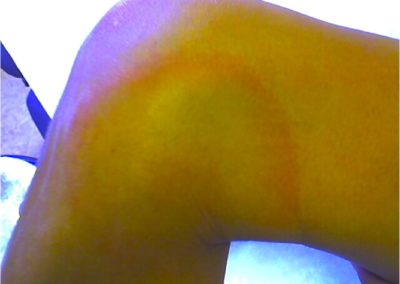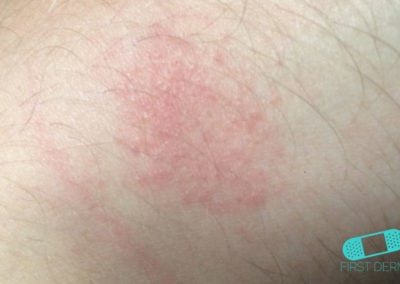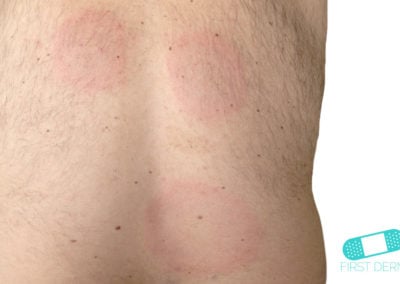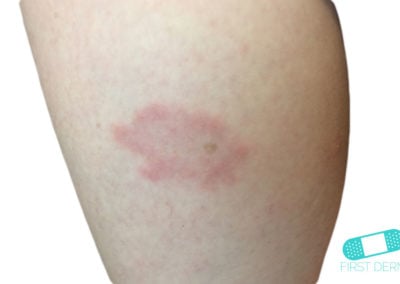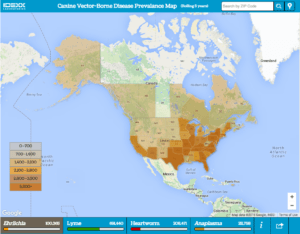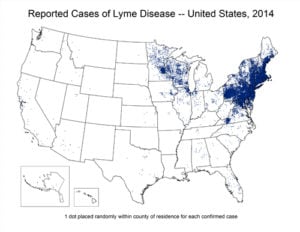Lyme disease
Medically reviewed by The Dermatologists and written by Dr. Alexander Börve
Common More than 2 000 ,000 US cases per year
- Requires medical diagnosis
- Symptoms: Warm rash with “bull’s eye” pattern, chills and aches
- Color: Typically red
- Location: Anywhere on the skin
- Treatment: Antibiotics
Lyme disease is a very dangerous bacterial infection, most commonly transmitted through tick bites. The ticks that transmit Lyme disease can occasionally transmit other tickborne diseases as well. They are responsible for at least ten different known diseases in the U.S., including Rocky Mountain spotted fever, babesiosis, and more recently, anaplasmosis and ehrlichiosis.
Get a lab Lyme disease TEST today and get peace of mind within a second
Blacklegged ticks, also known as deer ticks, transmit the bacterium Borrelia burgdorferi to humans through the bite. If left untreated, infection can spread to joints, the heart, and the nervous system.
Lyme disease affects people of all ages, but is most common in children, older adults and others such as firefighters and park rangers who spend time in outdoor activities and have higher exposure to ticks.
Ticks are parasites that feed by latching onto an animal host, imbedding their mouthparts into the host’s skin and sucking its blood. Once a tick has attached, if undisturbed it may feed for several days. The longer it stays attached, the more likely it will transmit Lyme and other pathogens into your bloodstream.
Get a lab Lyme disease TEST today and get peace of mind within a second
Symptoms
Tick bites are painless and unnoticeable. The first signs of infection are generalized fever-like symptoms such as chills and aches. Lyme disease is a multisystem inflammatory disease, which will then spread to joints, nervous system and other organ systems.
Additionally, an Erythema migrans rash may present with its characteristic “bull’s eye” pattern, which is a red dot with a red circle surrounding it. It occurs in 70 to 80 percent of infected patients and begins at the bite after 7 days on average. The rash then expands gradually over a period of days reaching up to 12 inches or more (30 cm) across. It can appear anywhere on the skin and may feel warm to touch. The rash is rarely itchy or painful. Similar rashes will continue to appear in other parts of the body if left untreated.
Get a lab Lyme disease TEST today and get peace of mind within a second
What can I do?
Steps to prevent the disease include using insect repellent, removing ticks promptly, applying pesticides, and reducing tick habitat.
If you see a tick attached to the skin, remove it immediately. Follow these steps for guidance:
- Use fine-tipped tweezers to grasp the tick as close to the skin’s surface as possible.
- Pull upward with steady, even pressure. Don’t twist or jerk the tick; this can cause the mouth-parts to break off and remain in the skin. If this happens, remove the mouth-parts with tweezers. If you are unable to remove the mouth easily with clean tweezers, leave it alone and let the skin heal.
- After removing the tick, thoroughly clean the bite area and your hands with rubbing alcohol, an iodine scrub, or soap and water.
- Dispose of a live tick by submerging it in alcohol, placing it in a sealed bag/container, wrapping it tightly in tape, or flushing it down the toilet. Never crush a tick with your fingers.
Get a lab Lyme disease TEST today and get peace of mind within a second
Should I seek medical care?
If left untreated, more serious complications such as arthritis may present. A doctor should be consulted immediately for treatment in the event of Lyme disease contraction.
Treatment
Most cases of Lyme disease can be treated successfully with a few weeks of antibiotics.
Source:
LymeDisease.org. About Lyme Disease. Available at: https://www.lymedisease.org/lyme-basics/lyme-disease/about-lyme/
Dogs and ticks. Which diseases have been confirmed in your neighborhood? (Interactive Map) Available at: http://www.dogsandticks.com/diseases_in_your_area.php
American Lyme Disease Foundation, Inc. What is Lyme Disease? Available at: http://www.aldf.com/
Centers for Disease Control and Prevention. Signs and Symptoms of Untreated Lyme Disease. Available at: https://www.cdc.gov/lyme/signs_symptoms/index.html
Centers for Disease Control and Prevention. Tick removal and testing. Available at: https://www.cdc.gov/lyme/removal/index.html
Evidence assessments and guideline recommendations in Lyme disease: the clinical management of known tick bites, erythema migrans rashes and persistent disease. Daniel J Cameron, Lorraine B Johnson, and Elizabeth L Maloney. Expert Rev Anti Infect Ther. 2014 Sep; 12(9): 1103–1135.
Ask a Dermatologist
Anonymous, fast and secure!

The Specialist doctor from the University Hospital in Gothenburg, alumnus UC Berkeley. My doctoral dissertation is about Digital Health and I have published 5 scientific articles in teledermatology and artificial intelligence and others.
